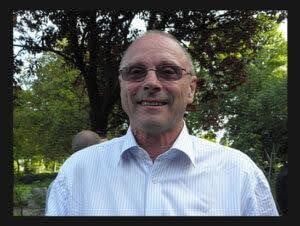The Intriguing Tale of How Wi-Fi Was Developed
Wi-Fi has become an essential part of our daily lives, providing seamless wireless connectivity and altering how we communicate, work, and enjoy ourselves. However, the development of this innovative technology was not the work of a single individual, but rather the result of decades of collaboration among multiple pioneers.
At Space India, we introduce students to new technology in space science and astronomy that blends education with excitement. By designing various interactive programs, we ignite their curiosity and foster a love for learning. Hands-on activities such as building model rockets, virtual tours of observatories, and using telescopes for stargazing can make complex concepts more accessible and enjoyable. Integrating learning modules and space-themed competitions can further enhance engagement, allowing students to explore and understand the universe while having fun. Such innovative educational approaches ensure that the next generation is well-prepared to contribute to the ever-evolving field of space science.
Circling back to the topic..
The Frequency-Hopping Spread Spectrum of Hedy Lamarr

The Austrian-American actress and inventor Hedy Lamarr played a significant role in the early development of Wi-Fi. Lamarr and composer George Antheil filed a patent for a “secret communication system” in 1942 that made use of spread spectrum technology and frequency-hopping. It is a method of transmitting radio signals by rapidly switching the carrier between different frequency channels. But it was resulting in Jamming because of too many signals transmitting at a single time.
Working alongside the composer George Antheil, the two of them applied their creative minds to the problem. Instead of transmitting signals across one wavelength, signals could be split up and broadcasted in short sections over multiple frequencies. With this invention, the Axis Powers would not be able to jam Allied torpedoes during World War II because radio frequencies would be rapidly switched, making it harder for the opponent to jam or detect the signal.
Despite not having direct use in Wi-Fi, Lamarr’s idea served as a precursor to contemporary wireless communication technology. Her invented concept of frequency-hopping spread spectrum is still in use today in a variety of wireless systems to prevent interference and preserve secure communications
The CSIRO Team and John O’Sullivan

Although Hedy Lamarr’s innovation created the foundation, Dr. John O’Sullivan and his colleagues at Australia’s Commonwealth Scientific and Industrial Research Organization (CSIRO) made major contributions to the development of Wi-Fi as we know it today.
In the late 1970s, Dr. O’Sullivan led a radio astronomy research group. They created apparatus that could interpret millions of radio signals reverberating throughout the universe and reconstruct them into a meaningful picture of cosmic events from the distant past. In 1983, Australia’s national science organization, CSIRO, ordered Dr. O’Sullivan to develop practical uses for the technology, so his team began working on upgrading wireless LANs. The existing systems at the time could only handle a few hundred kilobytes per second, but their goal was to boost speed by a thousandfold.
Early in the 1990s, O’Sullivan and his associates—Diet Ostry, Graham Daniels, John Deane, and Dr. Terry Percival—began a study to use radio astronomy to find black holes. They created a rapid Fourier Transform circuit that allowed them to separate out minuscule signals from space noise. Unexpectedly, O’Sullivan and his colleagues discovered that the same technology they had developed for radio astronomy could also be applied to wireless network signal unscrambling.
The Origins of Wireless Internet
A Wireless Local Area Network (WLAN) prototype was successfully created by O’Sullivan and his colleagues in 1991; the technology was copyrighted in Australia in 1992 and the US in 1996. The groundwork for high-speed wireless networking was established by their innovative work.
In an effort to make the technology more approachable and instantly identifiable, the Wireless Ethernet Compatibility Alliance (WECA) later created the acronym “Wi-Fi” in 1999. Since then, additional protocols and technologies have been introduced, resulting in major enhancements in Wi-Fi’s speed, range, and dependability.
Conclusion
Wi-Fi’s creation is evidence of the value of teamwork, perseverance, and serendipity. The foundation for Wi-Fi was set by Hedy Lamarr’s frequency-hopping spread spectrum, but John O’Sullivan and his CSIRO team’s creative innovation is what really made it happen. Wi-Fi has evolved into an essential component of modern life, allowing us to connect to the outside world and obtain information, interact, and amuse ourselves in ways never possible before.
—
If you like the blog, enrol your school or yourself (k-12 student) in our School Programs or Online Programs, call us at +91-74020 74020 or write to us for any query: getintouch@space-india.com

